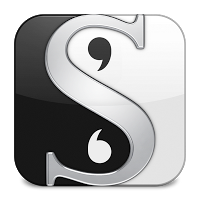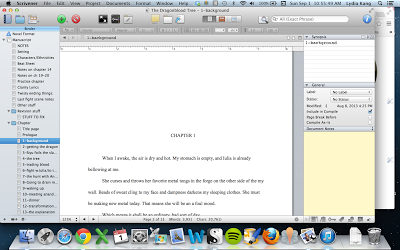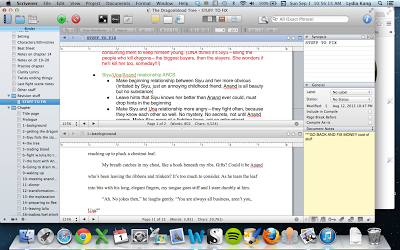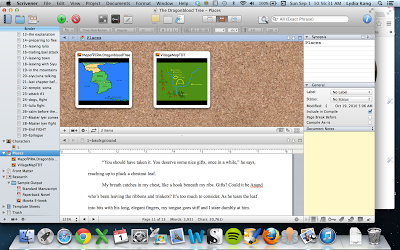Scrivener Part Two

Almost a year and half ago, I blogged about Scrivener.
There were a lot of positives, and a few negatives. As they say, the proof is in the pudding (which is supposed to mean that you don't know that pudding is good until you eat it, though I prefer to believe it's about whether the yeast has been "proofed" and whether those old bready pudding of yore actually rose, showing the yeast was alive...OMG, I'm totally off point now. And hungry.)
So, do I still use Scrivener?
Hells, yes.
Here's your proof, and a few screenshots to show what I still love about it:

So here's the basic layout of Scrivener as I use it. On the left is the "binder" view, which shows lists of notes as well as my actual manuscript divided into chapters. I title my chapters according to what's happening in them, so I can move from chapter to chapter without having to search where stuff happens. Although I can do that too, using the search window at the upper right.

So I love this split-screen view. Below, I have my manuscript text, and above it I have revision notes I refer to without having to look for lost hand-written notes. And notice on the right in the yellow field, there is a place to write notes that are linked to each chapter, so I can remind myself to fix stuff later. The top right lines space are notes where you can summarize the whole chapter if you want, but I'm not that detailed.

This is cool because I had to draw some really basic maps to keep my world straight in my head and I need to refer to them often. I drew them and imported them to this neat corkboard. You can do that with random images too, which is fun. There's also a place where you can built up character portfolios which is super helpful.
So! I'm still using Scrivener for all my first and second drafts. What about you? Any Scrivener tips or other wordprocessing comments about what works best for you?
Published on September 04, 2013 22:00
No comments have been added yet.



